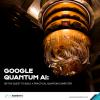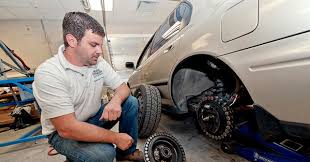
Breaking News
 BREAKING: Secret Study Conducted By Henry Ford Health Conclusively Proves...
BREAKING: Secret Study Conducted By Henry Ford Health Conclusively Proves...
Discovering Gems of Understanding
 Trump's Corporate Favor Factory
Trump's Corporate Favor Factory
 Google Quantum Supremacy And Artificial Intelligence
Google Quantum Supremacy And Artificial Intelligence
Top Tech News
 Graphene Dream Becomes a Reality as Miracle Material Enters Production for Better Chips, Batteries
Graphene Dream Becomes a Reality as Miracle Material Enters Production for Better Chips, Batteries
 Virtual Fencing May Allow Thousands More Cattle to Be Ranched on Land Rather Than in Barns
Virtual Fencing May Allow Thousands More Cattle to Be Ranched on Land Rather Than in Barns
 Prominent Personalities Sign Letter Seeking Ban On 'Development Of Superintelligence'
Prominent Personalities Sign Letter Seeking Ban On 'Development Of Superintelligence'
 Why 'Mirror Life' Is Causing Some Genetic Scientists To Freak Out
Why 'Mirror Life' Is Causing Some Genetic Scientists To Freak Out
 Retina e-paper promises screens 'visually indistinguishable from reality'
Retina e-paper promises screens 'visually indistinguishable from reality'
 Scientists baffled as interstellar visitor appears to reverse thrust before vanishing behind the sun
Scientists baffled as interstellar visitor appears to reverse thrust before vanishing behind the sun
 Future of Satellite of Direct to Cellphone
Future of Satellite of Direct to Cellphone
 Amazon goes nuclear with new modular reactor plant
Amazon goes nuclear with new modular reactor plant
 China Is Making 800-Mile EV Batteries. Here's Why America Can't Have Them
China Is Making 800-Mile EV Batteries. Here's Why America Can't Have Them
Turn Your Car Into a Plug-In Hybrid for $3,000

After five years of research, students at the University of Middle Tennessee have installed a full plug-in hybrid kit in a stock 1994 Honda Accord. The setup gives between 50 and 100 percent better gas mileage with two electric motors delivering power directly to the rear wheels, leaving the engine-powered front wheels to work with little effort. The price of all the parts comes to about $3,000 and can be applied to almost any car.
Energy for the motors comes from a lithium ion phosphate battery that sits in the trunk. The battery in the research vehicle is big and ugly so it can easily transmit data, but the production version will be about "the size of a carry-on bag," said head researcher Professor Charles Perry.
The twin three-phase DC brushless motors sit in the empty interior around the rear brakes. They power the wheels directly, rather than going through the drive shaft like other hybrids. Each motor produces 200 pound-feet of torque. The setup has four patents pending, all of which will be owned by the university to fund future research.

 China Innovates: Transforming Sand into Paper
China Innovates: Transforming Sand into Paper

